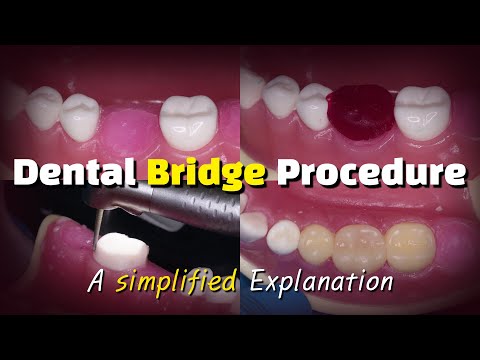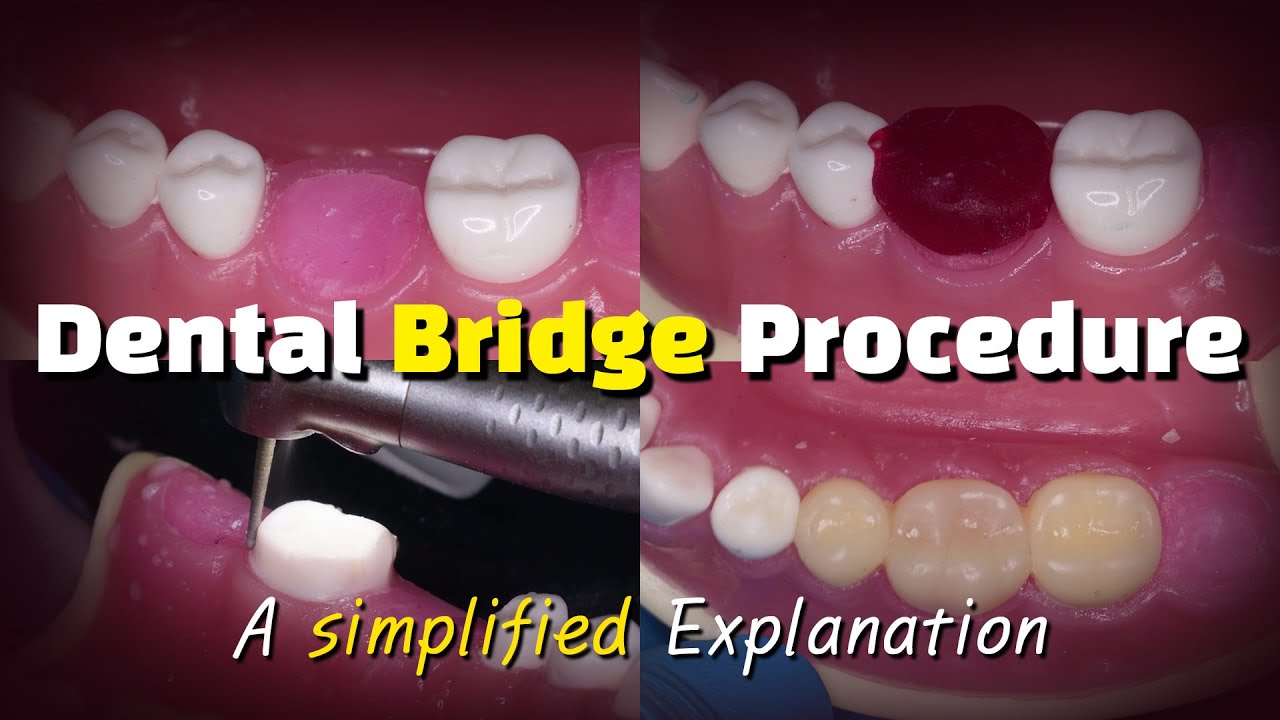Bridgework is a remarkable dental procedure that can restore your smile and improve your overall oral health. If you are missing one or more teeth, this innovative solution can fill the gaps and give you a natural-looking, complete set of teeth. Imagine being able to confidently bite into your favorite foods, speak clearly, and smile without any hesitation. With bridgework, you can reclaim your self-esteem and regain the functionality of your mouth.
This transformative procedure involves a strong and durable bridge that is anchored to the neighboring teeth or dental implants. The bridge itself is custom-made to seamlessly blend with your existing teeth, ensuring a harmonious and aesthetically pleasing result. By bridging the gap caused by missing teeth, you can prevent the shifting of surrounding teeth, maintain proper alignment, and avoid potential jaw joint problems.
But what sets bridgework apart is its ability to improve your oral health beyond just aesthetics. By filling in the empty spaces, it prevents food particles from getting trapped, which can lead to gum disease and decay. Additionally, the bridge provides support to the surrounding teeth, preventing them from becoming loose or weakened over time.
With bridgework, you can enjoy a restored smile that looks and feels natural, while also maintaining optimal oral health. Say goodbye to gaps and hello to a confident, functional, and beautiful smile!

What is Bridgework?
| Aspect | Description |
|---|---|
| Definition | Bridgework in dentistry refers to the process of replacing one or more missing teeth with a fixed dental prosthesis known as a dental bridge. |
| Types of Bridges | There are several types of dental bridges available, including traditional bridges, cantilever bridges, Maryland bridges, and implant-supported bridges. Each type has its unique characteristics and is selected based on the patient’s specific needs and oral health condition. |
| Materials Used | Dental bridges can be made from various materials, such as porcelain-fused-to-metal (PFM), all-ceramic, zirconia, or metal alloys. The choice of material depends on factors like durability, aesthetics, and compatibility with the patient’s surrounding teeth. |
| Procedure | The bridgework procedure typically involves several steps. It starts with an initial consultation and examination, followed by tooth preparation, dental impressions, bridge fabrication, and finally, the bridge’s placement and adjustment. The process requires precision and expertise to ensure a comfortable fit and natural appearance. |
| Benefits | By opting for bridgework, patients can enjoy several benefits. These include improved appearance, restored ability to chew and speak properly, prevention of adjacent teeth shifting, and overall enhanced oral health. Dental bridges can also provide a boost of self-confidence, allowing individuals to smile with ease. |
| Aftercare | Maintaining good oral hygiene practices is crucial to prolonging the lifespan of dental bridges. Patients should brush and floss regularly, attend regular dental check-ups, avoid biting on hard objects or using teeth as tools, and follow any additional instructions provided by their dentist. |
Note: It is essential to consult a qualified dentist to evaluate your specific dental needs and determine the most suitable bridgework option for you.
Title: “Revitalizing Your Smile: The Swift Dental Bridge Procedure”
Shortened Procedure Description:
A Dental Bridge Procedure is an efficient and transformative treatment option for restoring missing teeth. By bridging the gap between adjacent teeth, this procedure seamlessly enhances your smile’s appearance and functionality. Through a straightforward process, your dentist will skillfully create a personalized dental bridge, expertly crafted to blend with your natural teeth. Experience a renewed smile with minimal discomfort and downtime, as our skilled team ensures a swift and successful dental bridge installation.
What is Bridgework?
Bridgework refers to a dental procedure that involves replacing one or more missing teeth with artificial teeth, known as pontics, which are secured in place by attaching them to adjacent teeth or dental implants. This restorative treatment is an effective solution for individuals who have lost teeth due to decay, injury, or other oral health issues.
The Process of Bridgework
The process of getting bridgework done typically involves several steps:
1. Consultation: The first step is to schedule a consultation with a dentist or prosthodontist specializing in restorative dentistry. During this initial appointment, the dentist will examine your oral health, discuss your treatment options, and determine if bridgework is the most suitable solution for your specific case.
2. Preparation: Once you have decided to proceed with bridgework, the dentist will prepare the adjacent teeth, also known as abutment teeth, to serve as anchors for the bridge. This involves reshaping the abutment teeth by removing a portion of their enamel to make room for the dental crowns that will be placed over them.
3. Impressions: After the abutment teeth are prepared, the dentist will take impressions of your teeth and gums. These impressions will be sent to a dental laboratory, where skilled technicians will fabricate a custom-made bridge that fits your unique oral anatomy perfectly.
4. Temporary Bridge: While your permanent bridge is being created, the dentist will provide you with a temporary bridge to wear. This temporary bridge will protect your prepared teeth and restore your smile until the permanent bridge is ready to be placed.
5. Placement: Once the permanent bridge is ready, you will return to the dentist’s office for the final step. The dentist will remove the temporary bridge, clean the abutment teeth, and then carefully place and adjust the permanent bridge to ensure a comfortable and secure fit. Once in place, the bridge will be permanently cemented or attached to the adjacent teeth or implants.
Types of Bridges
There are several types of bridges available, and the most appropriate option for you will depend on various factors, including the location of the missing teeth and the condition of your remaining teeth and gums. The main types of bridges include:
1. Traditional Bridge: This is the most common type of bridge and involves creating a crown for the teeth on either side of the gap and attaching the artificial tooth or teeth in between. Traditional bridges are typically made of porcelain fused to metal or ceramic.
2. Cantilever Bridge: A cantilever bridge is used when there is only one adjacent tooth next to the gap. The artificial tooth or teeth are anchored to the adjacent tooth, providing support from one side.
3. Maryland Bridge: Also known as a resin-bonded bridge, this type of bridge is made of porcelain, porcelain fused to metal, or plastic teeth and gums supported by a metal or porcelain framework. Maryland bridges are attached to the adjacent teeth using a metal or porcelain wing.
4. Implant-Supported Bridge: In cases where multiple teeth are missing, an implant-supported bridge may be recommended. This type of bridge is secured in place by dental implants that are surgically placed in the jawbone, providing a stable foundation for the bridge.
Caring for Bridgework
Proper care and maintenance are essential to ensure the longevity and functionality of your bridgework. Here are some important tips for caring for your bridge:
1. Regular Oral Hygiene: Brush your teeth at least twice a day and floss daily, paying extra attention to the area around the bridge. This will help prevent plaque buildup and maintain good oral health.
2. Avoid Hard or Sticky Foods: Be cautious when consuming hard or sticky foods, as they can damage or dislodge the bridge. Cut food into smaller pieces and chew on the opposite side of the bridge whenever possible.
3. Regular Dental Check-ups: Visit your dentist regularly for check-ups and professional cleanings. During these appointments, the dentist can examine your bridge, make any necessary adjustments, and ensure that your oral health is in optimal condition.
The Benefits of Bridgework
Bridgework offers several benefits to individuals with missing teeth:
1. Restored Functionality: Bridges allow individuals to regain the ability to chew and speak properly, improving their overall quality of life.
2. Enhanced Aesthetics: By filling in the gaps left by missing teeth, bridges restore a natural-looking smile and improve facial aesthetics.
3. Prevents Shifting of Teeth: When a tooth is lost, neighboring teeth may shift into the gap, leading to bite problems and potential misalignment. Bridges prevent this shifting and maintain proper dental alignment.
4. Long-lasting Solution: With proper care, bridges can last for many years, providing a durable and reliable solution for missing teeth.
In conclusion, bridgework is a dental procedure that involves replacing missing teeth with artificial teeth that are secured in place by attaching them to adjacent teeth or implants. This restorative treatment offers numerous benefits, restores functionality and aesthetics, and helps maintain oral health. By following proper care and regular dental check-ups, individuals with bridgework can enjoy a long-lasting solution for their missing teeth.
What is Bridgework?
- Bridgework is a dental procedure used to replace one or more missing teeth.
- It involves creating a dental bridge, which consists of artificial teeth (pontics) held in place by dental crowns on either side.
- The dental crowns are placed on the healthy teeth adjacent to the gap, acting as anchors for the bridge.
- Bridgework can be made from various materials, such as porcelain, metal, or a combination of both.
- The procedure usually requires multiple appointments and may involve some preparation of the healthy teeth to ensure a proper fit.
- Bridgework is a popular and effective solution for restoring the appearance and function of missing teeth.
- It can improve chewing and speaking abilities, prevent shifting of surrounding teeth, and enhance overall oral health.
- Maintaining good oral hygiene and regular dental check-ups are crucial for the longevity of bridgework.
- With proper care, bridgework can last for many years, providing a natural-looking and durable tooth replacement option.

